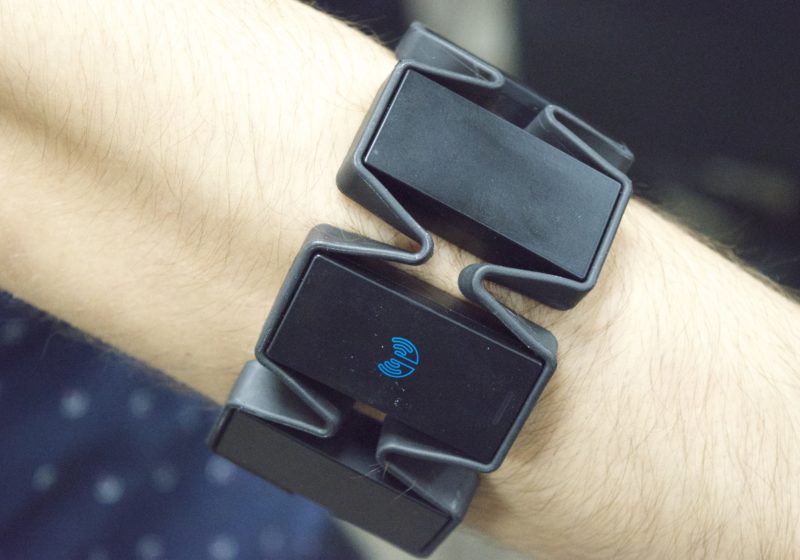A few weeks ago, I walked into the lounge at my dorm and ran into a good friend. But when we greeted each other, something strange happened—he pretended to twist a knob, and the music volume on his phone dropped.
That was my first exposure to Myo, a piece of wearable tech that lets you control other devices, such as a phone or a drone, with hand gestures.
Myo was created a few years ago by the startup Thalmic Labs. It has moddable source code that lets you program Myo to work with virtually any device.
It generally sells for about $175-$200, depending on which retailer you purchase it from.
How It Works
Myo takes advantage of electromyography (EMG) technology. EMG is typically used to conduct tests on muscles and motor neurons, but Thalmic Labs takes this information to determine what type of hand gestures the user is making.
This data is wirelessly transmitted to a device with a Myo-compatible program. The code then translates this movement into an instruction that tells the device Myo is connected to what to do.
Hands-on Look
I recently had the opportunity to try Myo out and experiment with its basic functionality.
The first thing I noticed was that the device fit comfortably on my arm. Comfort is a key thing to consider for any wearable tech, and Myo achieved this.
I attempted to use the default calibration that comes with Myo, which is a generalization of the typical person’s muscle movements and nerve impulses. However, it took several attempts to get Myo to recognize that I had made the lock/unlock gesture. When it began to recognize my movements, there was enough lag that I would end up back in the lock state in which I began.
The big test was when I tried to use Myo on a computer.
When I attempted to move the cursor around the screen, I was reminded of when I updated my laptop to Windows 10 and the mousepad driver was incompatible. The cursor, in some instances, moved as I intended. At others, it would hardly move around the screen or respond to my movements.
After a few tries, I got enough control of the cursor to try to click some buttons on the applications I had running. This I had no success at, as whenever I made the gesture that would be the equivalent to a left mouse click, the cursor would move off target.
Ultimately, manual (traditional) control had to be used to make the selection I wished.
The last part of my experimentation was with video and music playing. This was incredibly cool, as I was able to find and play REM’s “It’s the End of the World”with ease. The gestures associated with playing the music were not incredibly difficult, though at times it took several tries to obtain the intended effect. Myo also had a difficult time recognizing my attempt to control the volume of the music.
At the end of the song, I took Myo off. I noticed that there were faint marks where the device had rested, despite not feeling any pain or discomfort.
The Verdict
Overall, I would not recommend Myo to the everyday student.
Though the device has a large degree of flexibility, for the typical high school and college student, it would not be viable.
For example, one of the advertised applications of Myo is to make presentations. For many college classes, a large formal presentation is not required. It’d probably be most used for controlling video games and music devices.
I would still recommend Myo with some reservation to certain groups. Some groups would be professors, business people, and career researchers, since they all give relatively frequent presentations. Myo would allow them to avoid the difficulties that may be associated with a projector controller.
I would also recommend Myo to people who operate smart technology at a close range. While I did not have the opportunity to try Myo out with a drone, I can definitely see the potential for Myo to play around with that kind of device. It is important to note that this would be limited by wireless range, a major drawback for Myo, which operates on Bluetooth. At the very least, you won’t be able to violate FAA regulations by flying your drone too high.
My recommendations are still with reservation, however, since Myo requires you to learn what is effectively another language, and it has not proven itself to be exceptionally accurate at determining hand gestures.
I do see potential in Myo for the future. I think if the basic programming were done to allow a person to type while wearing two Myo devices, the technology could be very successful. While the user would have to purchase an additional device, it would allow people to type directly into a tablet or phone without using a physical or on-screen keyboard.
I am hoping that in the near future it is developed further to better meet the needs of the typical person, as opposed to the narrow group of technology buffs and gamers it currently caters to.







